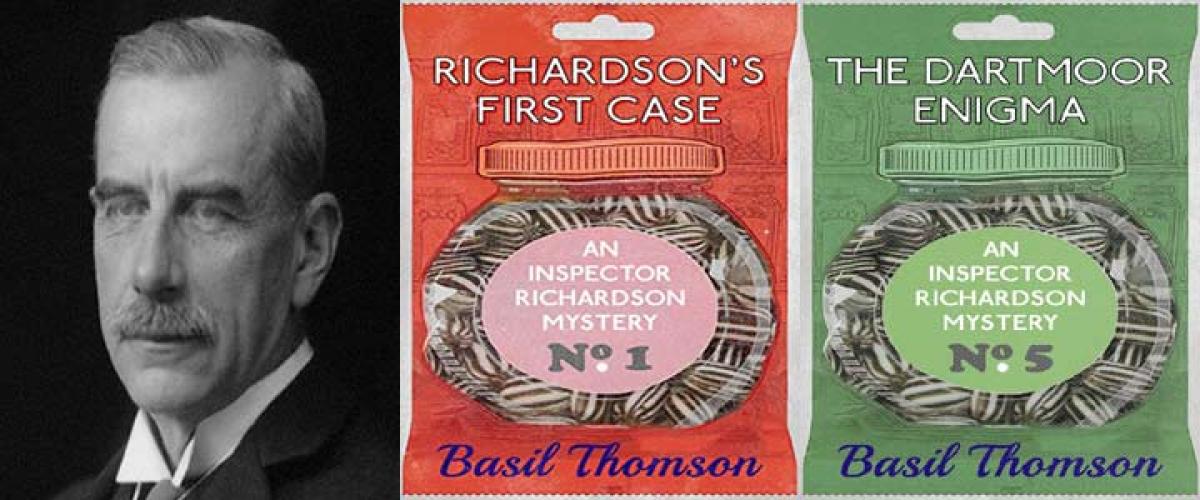Live
- First Star Outside Milky Way Captured: WOH G64 is 2,000 Times Larger Than the Sun
- Sikkim govt to constitute state Niti Ayog: CM Tamang
- CBI books Rajasthan narcotics inspector for Rs 3 lakh bribe
- Rajasthan bypolls: A tough contest between BJP and Congress
- Albania joins SEPA, paving way for EU integration
- Japanese government approves 250-billion USD economic package to ease price pain
- Six pharma companies to set up their units in Telangana
- The Unstable Events of a 17-Wicket Day in Perth: India vs Australia
- Dutch FM's Israel trip cancelled after Netanyahu's arrest warrant
- UK to increase energy price cap by 1.2 per cent
Just In

The London policeman, a member of the modern world\'s first professional law and order enforcement force, has long been a model for his counterparts and a subject for crime novelists.
The London policeman, a member of the modern world's first professional law and order enforcement force, has long been a model for his counterparts and a subject for crime novelists.
However, the crime-solving skills of Scotland Yard's finest were initially not very high and amateur sleuths – Sherlock Holmes, for example – easily upstaged them, though not for very long.
But while Holmes and his biographer didn't have much regard for their official colleagues' acumen, they acknowledged their bravery.
"Our official detectives may blunder in the matter of intelligence, but never in that of courage. Gregson climbed the stair to arrest this desperate murderer with the same absolutely quiet and businesslike bearing with which he would have ascended the official staircase of Scotland Yard..." wrote Dr Watson in ‘The Adventure of the Red Circle’.
Less than two decades later, in another set of tales, their capability is beyond reproach. The British Ambassador in Paris seeks Scotland Yard detectives when a subordinate is found murdered.
Two are dispatched, who solve the case, arresting the murderer and securing a confession in 10 days flat, and are ready to go home.
They are taken to meet the envoy who, informed they are leaving, splutters: "You've had to give the case up?" Told of their success, he says: "Thank heavens I sent for you."
This could be because these tales – among the first police procedurals – were written by a policeman himself, and a remarkable one. Sir Basil Home Thomson (1861-1939) was also a colonial administrator, prison governor, intelligence officer, writer – and one of the first victims of an alleged sting.
After Eton, he went to Oxford, but left after two terms due to "depression" and spent the next two years farming in the US. Joining the Colonial Service, he spent about a decade in Fiji and Tonga. Back in Britain, he was called to the Bar, but chose to become Deputy Governor of Liverpool prison and spent a decade in prison administration.
In 1913, Thomson became Assistant Commissioner "C" (Crime) of Metropolitan Police, or head of the CID at New Scotland Yard. When World War I broke out, the CID was MI5's enforcement arm, and Thomson led its fights against spies (he personally interrogated Mata Hari) and Irish and Indian revolutionaries.
In 1919, he was also made overall charge of all intelligence agencies, but two years later, removed without explanation. Thomson, writing for nearly a quarter century now – about his experiences in South Pacific (‘South Sea Yarns’) in policing and counter-intelligence (‘Queer People’, re-titled ‘Odd People’ in modern reprint), now turned to crime fiction.
In 1925, came a volume of stories – and he was arrested for "public indecency" in a London park. His defence was not helped by his vague explanations about why he met the woman and he was fined five pounds (however, there are many questions about the case – the woman was a prostitute and her fine was paid by a journalist). But, two years hence, Thomson was back in action, advising on Siamese police reforms.
It is crime fiction that accounts for most of his two-dozen-odd books and the most engaging are the eight-installment Richardson series (all appearing within four years) with their varied premises, unique characters, and maintaining suspense with plenty of red herrings, twists and turns, but all in a brisk, sparkling style.
The crimes are mostly murder, usually with robbery and later drugs, around England, as well as France, solved through collecting clues and evidence, interrogating suspects, and checking alibis.
The focus is on hard work – as a team. "Real life is quite unlike detective fiction; in fact, in detective work fiction is stranger than truth. Mr Sherlock Holmes, to whom I take off my hat with a silent prayer that he may never appear in the flesh, worked by induction, but not, so far as I am able to judge, by the only method which gets home, namely organisation and team work," he wrote in ‘Odd People’.
The series features a remarkable career progression for the hero, who begins as a beat constable in ‘Richardson's First Case’ (1933) but impresses superiors with his quick thinking to be taken into the CID, is soon an inspector and ends up Chief Constable. However, not much is told about his background, save that he is Scottish, and finds his wife in his sixth outing (‘Who Killed Stella Pomeroy?’).
And he is not always in the thick of things. In ‘The Case of the Dead Diplomat’, it is his better French-speaking sergeant who plays a bigger role, while in his last two outings – ‘The Milliner's Hat Mystery’ and ‘A Murder is Arranged’ – Richardson only guides his subordinates. In quite a few, young publisher Jim Milsom also lends a hand.
A classic of ‘Golden Age Crime’, the series is a treat for those fond of mental puzzles in bygone eras and after long unavailability, easily and reasonably obtainable online (less than Rs 50 each).

© 2024 Hyderabad Media House Limited/The Hans India. All rights reserved. Powered by hocalwire.com







